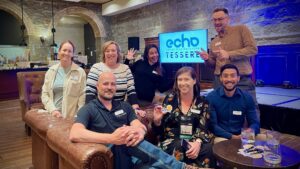Thank you to Justin Ochs, who holds a Master of Science in Foresight from the University of Houston, for engaging in this thought-provoking exchange around futurists, futures studies, and how to broaden and deepen how we think about the future.
Key Points:
1. There is No Single Future
With an infinite number of variables, it’s impossible to predict the future with certainty. And as Justin began, “There’s not just one future. There are a bunch of possibilities”. Futurists systematically explore these possibilities through research, projection, and visioning; “helping people in the present create their preferred futures”. The possible futures for Zoos & Aquariums are many, and our actions today are a vote for the future we choose, making intentionality of utmost importance. A quote attributed to futurist Joel Barker and often used by Nelson Mandela, “Vision without action is merely a dream. Action without vision is merely passing time. But vision with action can change the world.”
2. Identify Assumptions. Then, Challenge Them.
Justin cautions us that we “can end up in different places depending on our starting assumptions” and that identifying and challenging our assumptions are an imperative part of the futurist process. There are three things that hinder us in thinking about the future:
1. Lack of information – what we don’t know
2. Incorrect theories – what we think we know
3. Unexamined assumptions – what we believe we know
Without gathering additional information, questioning theories, and challenging assumptions, we are liable to accentuate our biases and project linearly into the future. Assumptions in the Zoo & Aquarium industry abound. At its very core, do we assume that Zoos & Aquariums will always exist? That any particular community’s Zoo or Aquarium should exist? And in what form? What would we expose if we challenged these assumptions?
3. By Studying Potential Futures, We Can Shape Our Preferred Future
Through a process outlined in a Foresight Framework, futurists enable organizations to identify preferred futures and shape a tangible path forward. Beginning with “framing”, the scope and issue is defined, and current conditions are established. This provides a foundation for “scanning”, collecting information and exploring signals of change across history, popular culture, law, science, policy, and beyond. With this information, “futuring” identifies plausible and alternative future scenarios that lead to “visioning” where implications of the alternative futures are considered, and a preferred future and desired outcomes chosen. Organizations then “design” a plan to achieve the vision and goals, and “act” to realize their preferred future. For Zoos & Aquariums, this valuable exercise exposes blind spots, challenges assumptions, and brings intentionality to the strategic allocation of time and resources.




